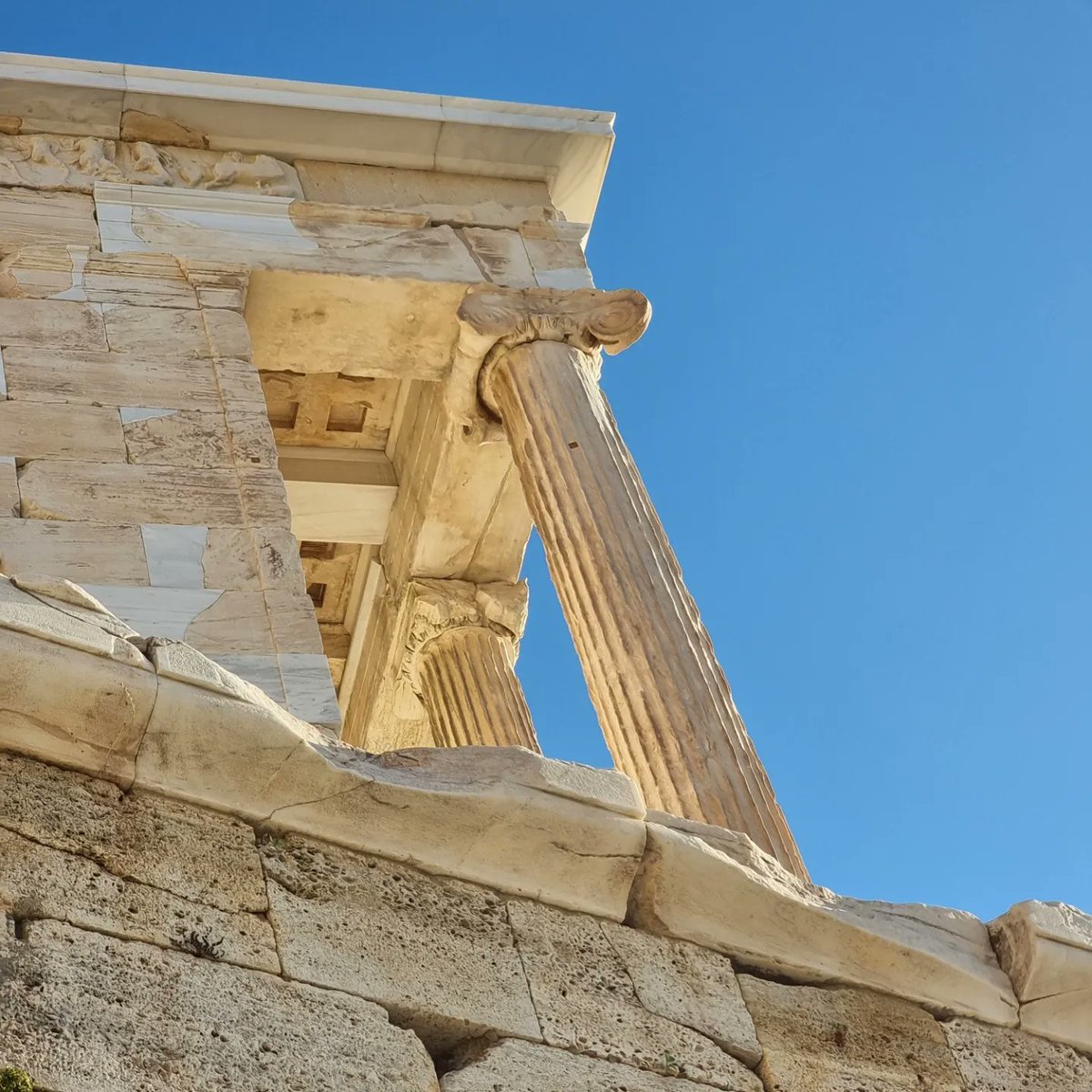
The Propylaeum forms a grand monumental gateway onto the Acropolis. Because it funnels people through a relatively narrow route, it almost always feels like the most crowded part of the site.
#propylaeum #Acropolis #parthenon #Athens #Greece
#propylaeum #Acropolis #parthenon #Athens #Greece

There are other Propylaea, but the one on the Athenian Acropolis is seen as the prototypical example of such monumental gateways.
The Greek Revival Brandenburg Gate of Berlin (below) & the Propylaea in Munich were both designed to evoke the middle portion of the Athens propylaea.
The Greek Revival Brandenburg Gate of Berlin (below) & the Propylaea in Munich were both designed to evoke the middle portion of the Athens propylaea.

Built between 437 and 432 BCE as a part of the Periklean Building Program, it was the last in a series of gatehouses built on the citadel. Its architect was Mnesikles (according to Plutarch), his only known building.
It is evident from traces left on the extant building that the plan for the Propylaia evolved considerably during its construction, and that the project was ultimately abandoned in an unfinished state.
From the socket for the roof beam and the spur walls on the north and south flanks of the central hall it can be discerned that the original plan was for a much larger building than its final form.
(proposed in grey - extant in black)
(proposed in grey - extant in black)

Mnesikles had planned a gatehouse composed of five halls: a central hall that would be the processional route to the Acropolis, Of these only the central hall, the north-east hall (the Pinakotheke) and a truncated version of the south-east hall reached completion.
Alterations to the Propylaia in the classical period were slight, the most significant being the construction of a monumental stairway in pentelic marble built in the reign of Claudius, probably 42 CE, and arranged as a straight flight of steps.
This staircase included a central inclined plane along which the sacrificial animals could be led, also a small dog-leg stairway on the Nike bastion that led to the Temple of Athena Nike.
https://twitter.com/elginism/status/1572818503127732224
Unlike many other structures on the Acropolis, the Propylaeum features no decorative or architectural sculpture; all metopes and pediments were left empty and there were no akroteria.
There were however a number of freestanding shrines and votives stood in the vicinity of the Propylaia, and have come to be associated with it if only by virtue of Pausanias' description of them and their proximity to the building.
Pausanias records that the inner compartment of the NE wing was used to display paintings; he calls it οἴκημα ἔχον γραφάς, “a chamber with paintings,” describing various works by masters of the C5th BC. By his time the picture gallery had been in existence for several centuries
• • •
Missing some Tweet in this thread? You can try to
force a refresh








